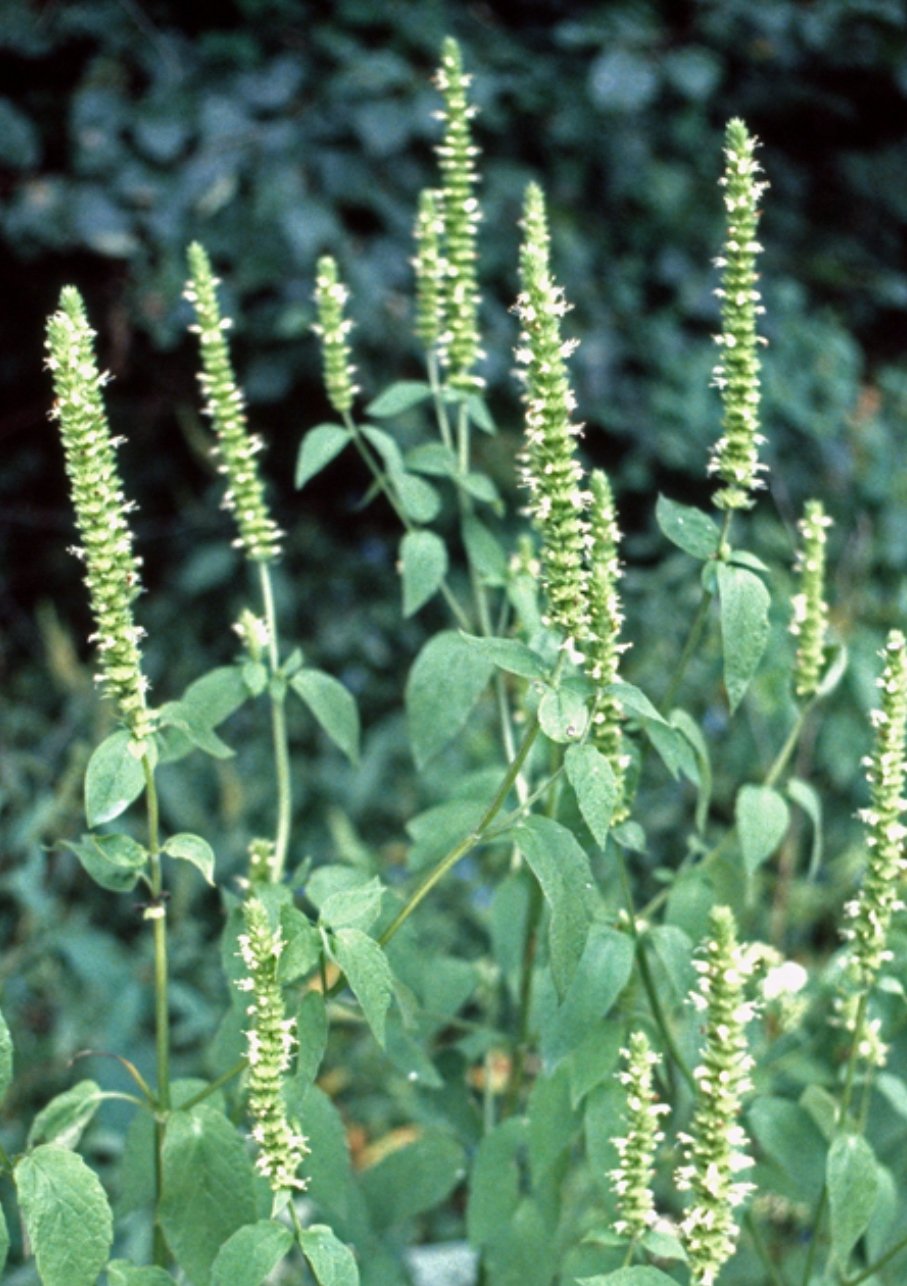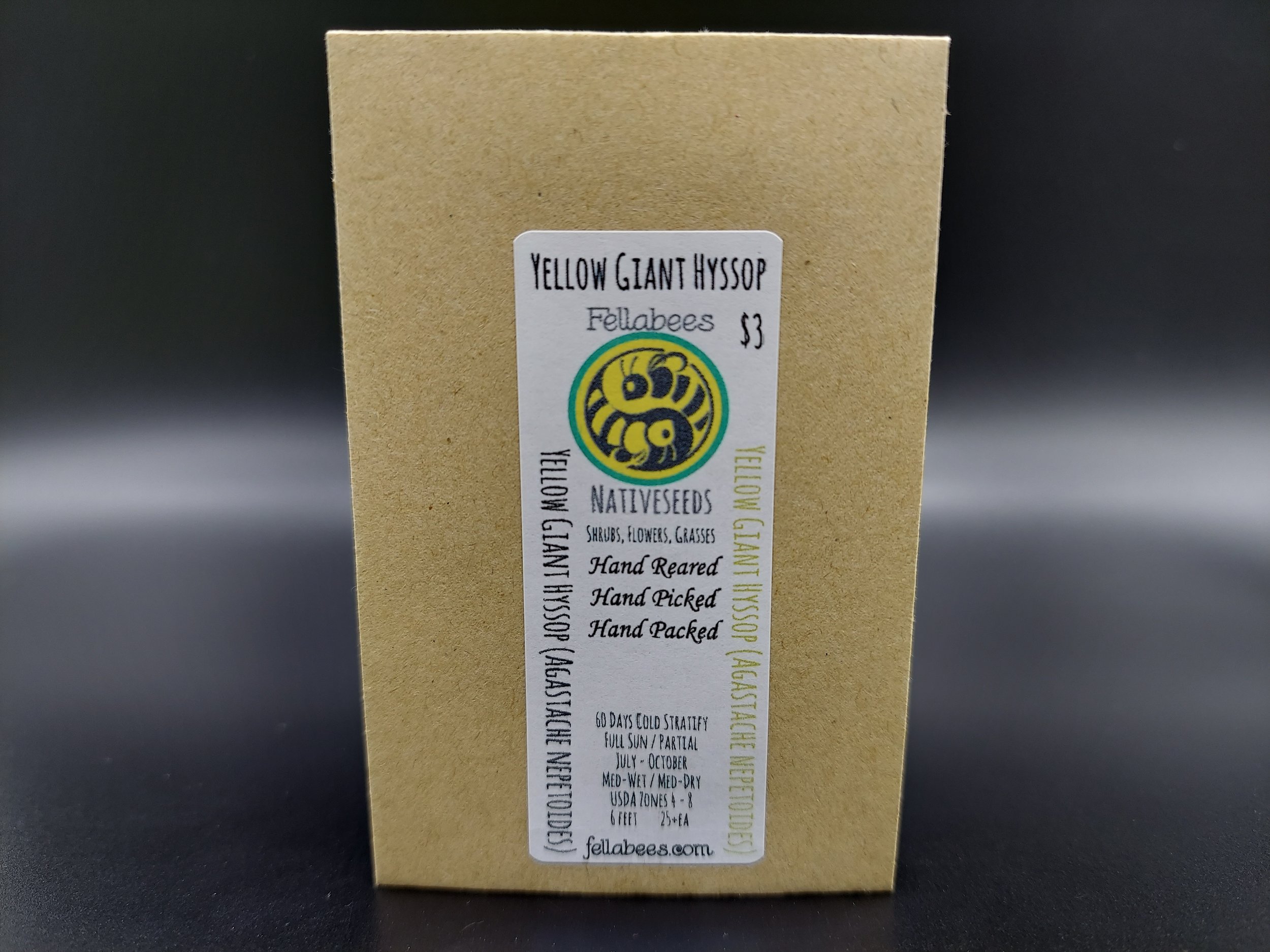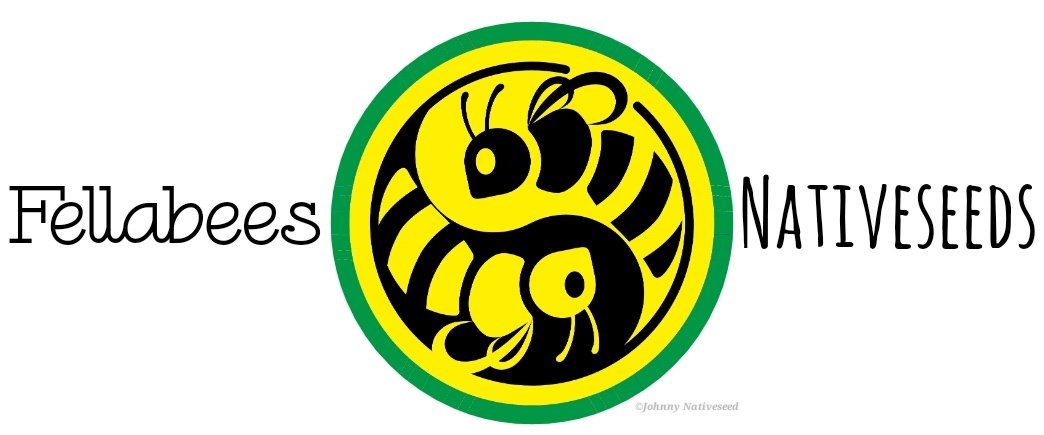 Image 1 of 3
Image 1 of 3

 Image 2 of 3
Image 2 of 3

 Image 3 of 3
Image 3 of 3




Yellow Giant Hyssop (Agastache nepetoides)
Yellow Giant Hyssop (Agastache nepetoides)
Agastache nepetoides, commonly named The Yellow Giant Hyssop, is a tall understated perennial flower native to much of the United States and Canada. It is a member of the Lamiaceae (Mint) family.
It is listed as endangered in Connecticut, and as threatened in the state of New York, Vermont, and Wisconsin.
It is related to other Hyssop species in our inventory at Fellabees and Nativeseeds such as Anise Hyssop and Purple Giant Hyssop.
The blooms open a few at a time along its long spike, feeding many pollinators leading well into fall.
Preferring a partly shady and rich soiled savanna, it will tolerate full sun, but not deep shade. When it favors its sight it will spread slowly by rhizomes to develop an enduring colony.
This plant is considered present but rare in several counties of the states of Wisconsin, Minnesota, New York, Vermont, Connecticut, New Jersey, Maryland, North Carolina, South Carolina, Georgia, and Alabama.
Plant Details:
USDA Zones: 4-8
Germination Needs: 60 Days Cold Stratification, Seed is very small and need light to germinate. Do not cover with soil, only ensure soil contact and a very light dusting of soil may be applied. Keep soil moist but not soaking. If starting in trays, bottom watering is recommended.
Life Cycle: Perennial
Sun Exposure: Full to Partial
Soil Moisture: Medium-Wet, Medium, Medium-Dry
Plant Spacing: 18-24 inches
Height: 6 feet
Bloom time: July, August, September, October
Bloom Color: Cream, Yellow
Advantages :
Pollinator Favorite: butterflies, moths, bees, wasps, beetles
Bird Favorite: seeds, insects, fruit, nectar, nesting, perchs.
Deer Resistant: Yes
Native to, or Present in: Wisconsin, Minnesota, Iowa, Illinois, Indiana, Michigan, Ohio, Pennsylvania, New York, Vermont, Massachusetts, Connecticut, New Jersey, Delaware, Maryland, West Virginia, Virginia, Kentucky, Tennessee, North Carolina, South Carolina, Georgia, Alabama, Arkansas, Missouri, Oklahoma, Kansas, Nebraska, and South Dakota.
.
.
Packet quantities:
We pride ourselves on ethical, hands on, ecological management, using no mechanical or chemical methods whatsoever.
All of our native seed is hand reared, hand picked, and hand packed from native prairies under our exclusive management, never breaking chain of custody from the field until it is sent to you. Each packet is hand prepared for shipment by us, directly.
Small seed species will contain greater than 20-25 seed
Large seed species will contain greater than 10-15 seed
It is our mission to spread the wealth of native plant and pollinator ecological sustainability, and educate back yard gardeners as well as corporate and government entities in how to germinate, grow, and benefit from native synergies.
Thank you for your support, it is because of you, that we can grow together to do, what we do.🐛🦋🐝🐞🌾🌱🌼🧡
Yellow Giant Hyssop (Agastache nepetoides)
Agastache nepetoides, commonly named The Yellow Giant Hyssop, is a tall understated perennial flower native to much of the United States and Canada. It is a member of the Lamiaceae (Mint) family.
It is listed as endangered in Connecticut, and as threatened in the state of New York, Vermont, and Wisconsin.
It is related to other Hyssop species in our inventory at Fellabees and Nativeseeds such as Anise Hyssop and Purple Giant Hyssop.
The blooms open a few at a time along its long spike, feeding many pollinators leading well into fall.
Preferring a partly shady and rich soiled savanna, it will tolerate full sun, but not deep shade. When it favors its sight it will spread slowly by rhizomes to develop an enduring colony.
This plant is considered present but rare in several counties of the states of Wisconsin, Minnesota, New York, Vermont, Connecticut, New Jersey, Maryland, North Carolina, South Carolina, Georgia, and Alabama.
Plant Details:
USDA Zones: 4-8
Germination Needs: 60 Days Cold Stratification, Seed is very small and need light to germinate. Do not cover with soil, only ensure soil contact and a very light dusting of soil may be applied. Keep soil moist but not soaking. If starting in trays, bottom watering is recommended.
Life Cycle: Perennial
Sun Exposure: Full to Partial
Soil Moisture: Medium-Wet, Medium, Medium-Dry
Plant Spacing: 18-24 inches
Height: 6 feet
Bloom time: July, August, September, October
Bloom Color: Cream, Yellow
Advantages :
Pollinator Favorite: butterflies, moths, bees, wasps, beetles
Bird Favorite: seeds, insects, fruit, nectar, nesting, perchs.
Deer Resistant: Yes
Native to, or Present in: Wisconsin, Minnesota, Iowa, Illinois, Indiana, Michigan, Ohio, Pennsylvania, New York, Vermont, Massachusetts, Connecticut, New Jersey, Delaware, Maryland, West Virginia, Virginia, Kentucky, Tennessee, North Carolina, South Carolina, Georgia, Alabama, Arkansas, Missouri, Oklahoma, Kansas, Nebraska, and South Dakota.
.
.
Packet quantities:
We pride ourselves on ethical, hands on, ecological management, using no mechanical or chemical methods whatsoever.
All of our native seed is hand reared, hand picked, and hand packed from native prairies under our exclusive management, never breaking chain of custody from the field until it is sent to you. Each packet is hand prepared for shipment by us, directly.
Small seed species will contain greater than 20-25 seed
Large seed species will contain greater than 10-15 seed
It is our mission to spread the wealth of native plant and pollinator ecological sustainability, and educate back yard gardeners as well as corporate and government entities in how to germinate, grow, and benefit from native synergies.
Thank you for your support, it is because of you, that we can grow together to do, what we do.🐛🦋🐝🐞🌾🌱🌼🧡
Yellow Giant Hyssop (Agastache nepetoides)
Agastache nepetoides, commonly named The Yellow Giant Hyssop, is a tall understated perennial flower native to much of the United States and Canada. It is a member of the Lamiaceae (Mint) family.
It is listed as endangered in Connecticut, and as threatened in the state of New York, Vermont, and Wisconsin.
It is related to other Hyssop species in our inventory at Fellabees and Nativeseeds such as Anise Hyssop and Purple Giant Hyssop.
The blooms open a few at a time along its long spike, feeding many pollinators leading well into fall.
Preferring a partly shady and rich soiled savanna, it will tolerate full sun, but not deep shade. When it favors its sight it will spread slowly by rhizomes to develop an enduring colony.
This plant is considered present but rare in several counties of the states of Wisconsin, Minnesota, New York, Vermont, Connecticut, New Jersey, Maryland, North Carolina, South Carolina, Georgia, and Alabama.
Plant Details:
USDA Zones: 4-8
Germination Needs: 60 Days Cold Stratification, Seed is very small and need light to germinate. Do not cover with soil, only ensure soil contact and a very light dusting of soil may be applied. Keep soil moist but not soaking. If starting in trays, bottom watering is recommended.
Life Cycle: Perennial
Sun Exposure: Full to Partial
Soil Moisture: Medium-Wet, Medium, Medium-Dry
Plant Spacing: 18-24 inches
Height: 6 feet
Bloom time: July, August, September, October
Bloom Color: Cream, Yellow
Advantages :
Pollinator Favorite: butterflies, moths, bees, wasps, beetles
Bird Favorite: seeds, insects, fruit, nectar, nesting, perchs.
Deer Resistant: Yes
Native to, or Present in: Wisconsin, Minnesota, Iowa, Illinois, Indiana, Michigan, Ohio, Pennsylvania, New York, Vermont, Massachusetts, Connecticut, New Jersey, Delaware, Maryland, West Virginia, Virginia, Kentucky, Tennessee, North Carolina, South Carolina, Georgia, Alabama, Arkansas, Missouri, Oklahoma, Kansas, Nebraska, and South Dakota.
.
.
Packet quantities:
We pride ourselves on ethical, hands on, ecological management, using no mechanical or chemical methods whatsoever.
All of our native seed is hand reared, hand picked, and hand packed from native prairies under our exclusive management, never breaking chain of custody from the field until it is sent to you. Each packet is hand prepared for shipment by us, directly.
Small seed species will contain greater than 20-25 seed
Large seed species will contain greater than 10-15 seed
It is our mission to spread the wealth of native plant and pollinator ecological sustainability, and educate back yard gardeners as well as corporate and government entities in how to germinate, grow, and benefit from native synergies.
Thank you for your support, it is because of you, that we can grow together to do, what we do.🐛🦋🐝🐞🌾🌱🌼🧡
